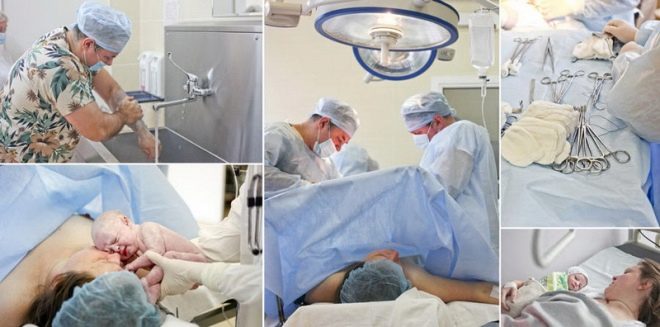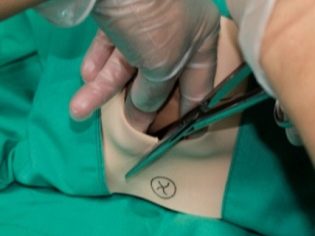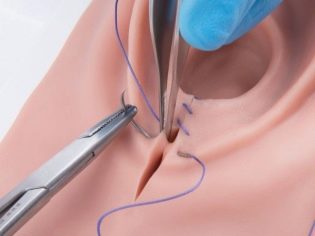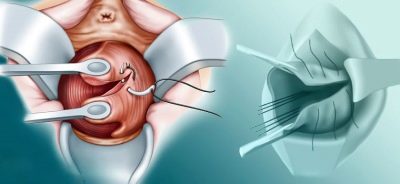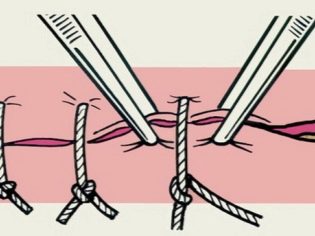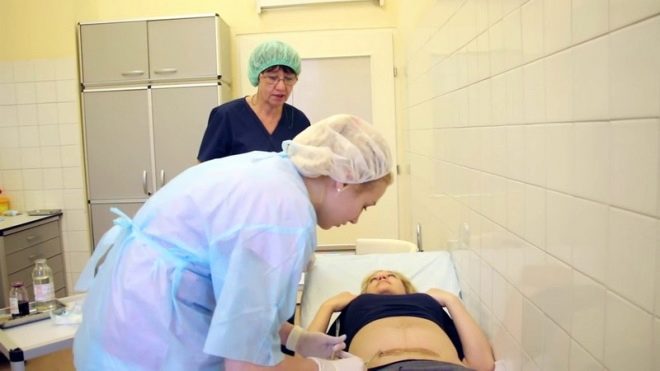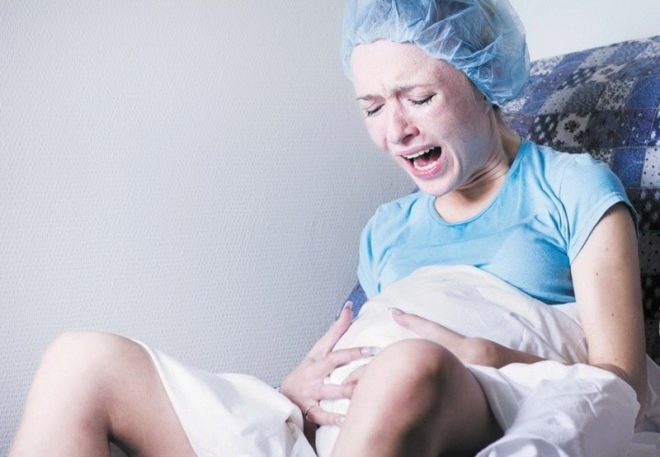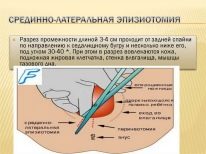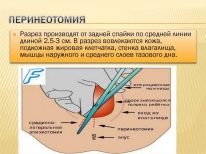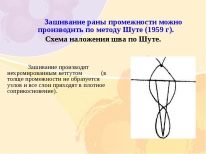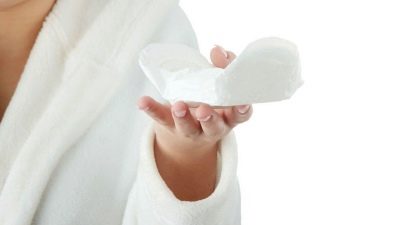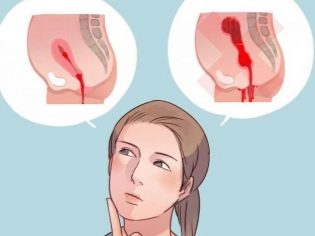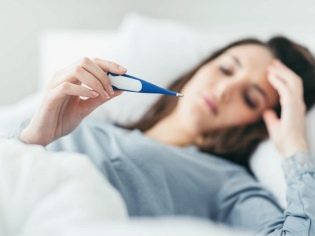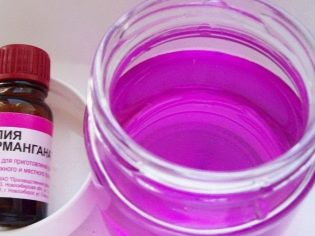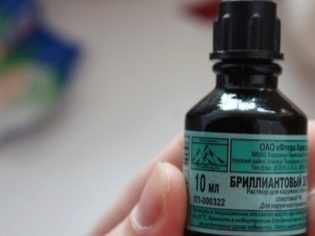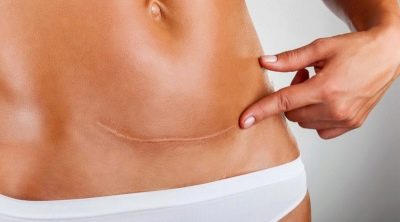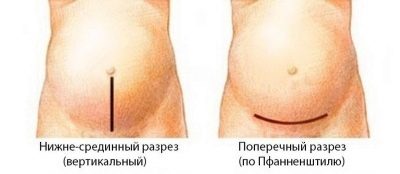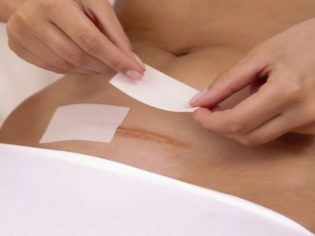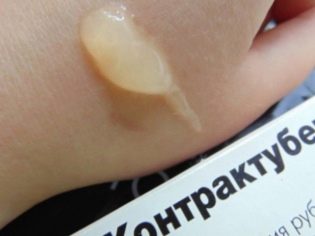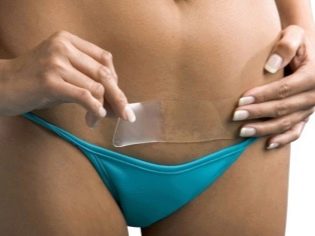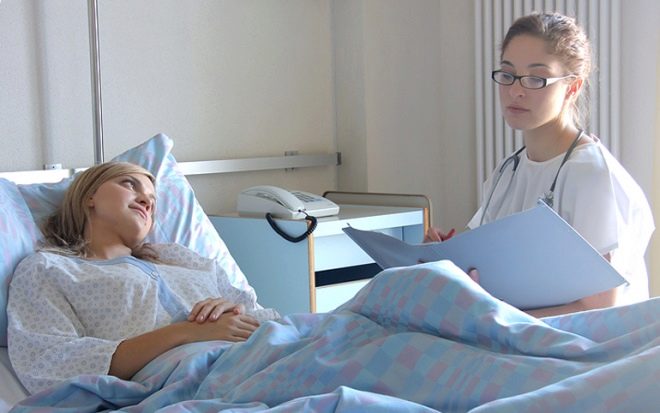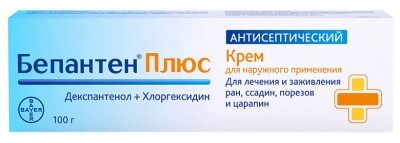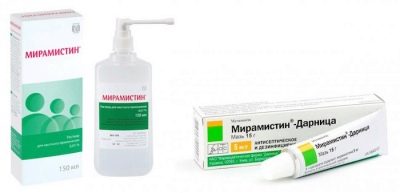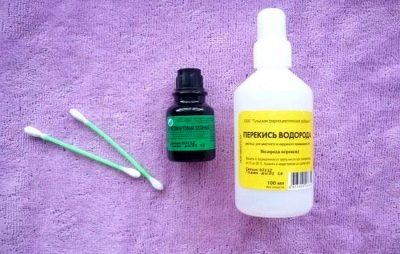How long do stitches heal after childbirth and what does it depend on? How and what to process them?
Not all births go smoothly. Sometimes it does not go without gaps, and often, to the baby was born, and does require surgery. It is clear that the violation of the integrity of the tissue - spontaneous or surgical - requires suturing. It is the seams after childbirth that cause many questions about care, possible problems and how to solve them. How post-partum stitches heal, what influences this process and how to care for them, we will tell in this material.
When and how to impose?
The need for suturing occurs when the integrity of the tissue is broken. With natural childbirth in the process of birth of the baby, there may be a discrepancy between the size of the head and the genital tract - then an artificial incision is required in the crotch area. Errors in the patient's period can lead to ruptures of the cervix, vagina. Perineal tears can occur spontaneously. To prevent them, doctors can incise the perineum. This procedure is called episiotomy.
After the baby is born and the afterbirth (placenta) is born, physicians must perform an audit - they examine the cervix for possible ruptures, assess the condition of the vagina and the external genital organs. If there are internal tears, stitches on the cervix, suture the damaged walls of the vagina. The overlay fixing stitches after episiotomy is called episiorrhagic. Stitches are always imposed using anesthesia - local or general (if we are talking about extensive breaks in the internal location).
Internal sutures are applied by self-absorbable sutures by several techniques adopted in surgery, which ensure reliable and accurate contact of the wound edges. Such surgical material does not require care, it is not removed after the end of healing. It resolves itself over time, only a small scar remains on the internal tissues.
External breaks on the perineum and labia are usually sutured with nodular technique using durable nonabsorbable sutures, which after a while, when the edges of the wound coalesce, must be removed. They need proper and thorough care.
During caesarean section, the woman also has two types of sutures - internal, fixing the incision edges on the wall of the uterus, and external - on the skin of the abdominal wall. As in the case of physiological childbirth, internal scars do not need care, they heal and resolve themselves, but external scars require attention.
Recently, doctors try to make stitches after surgical labor, and stitches after rupture or episiotomy, cosmetic - a special suturing technique makes the healing process faster, and the scars, which in any case remain, are less noticeable.
Why hurt?
Regardless of the mode of delivery, in violation of the integrity of the tissues, nerve endings and deeper layers of tissues are damaged. Any pain in the area of stitches after childbirth, as well as a large range of other sensations, is connected with this fact.
First, the stitches hurt, especially when moving. Women after surgical birth experience more severe pain, since the surgical area is wider - the incision for a caesarean stomach is about 10 centimeters in length.In the intermediate region, the incision does not exceed 3 centimeters if an episiotomy occurred. In case of spontaneous rupture, its length and shape may be different.
The stitches that have been put on, for the first few days, stretch as they move, creating discomfort. But after a week, they almost cease to hurt, because when restoring the integrity of damaged tissues, the primary recovery of nerve endings also occurs. But other sensations appear - it seems to the woman that they itch, pull, pinch, itch.
In many ways, the intensity of pain depends on how high the woman's susceptibility to pain in general. Some in two weeks have no pain in the seam area, while others have discomfort for six months after the birth of a baby.
Does it hurt to remove stitches - a question that worries every woman who has them. External seams after natural childbirth are removed depending on the rate of healing, usually after 8–10 days. After cesarean section, sutures are removed on the 7-8th day after the operation. There is no acute pain, there is only a slight "tingling" in the area from which the stitch of the surgical thread is extracted. Usually within 2-3 days after removal, some minor discomfort disappears.
Separately, it must be said about the restoration of sensitivity. A slight numbness in the area of imposition of postpartum sutures is observed after vaginal delivery, and after cesarean section. This numbness is associated with a violation of the integrity of the nerve endings. Usually within six months of the year, the numbness passes.
After natural childbirth
The need for stitching often arises, because the birth itself is an unpredictable process. Seams after physiological birth through natural paths have their own characteristics and require special treatment.
What are the?
A woman cannot feel internal seams (on the cervix, on the vaginal wall), in fact, she cannot. Stitches on the mucous membrane do not bother the newly-made mother, which is not the case with external stitches. If the perineal dissection was performed, the suture can be either vertical or deviated to the right or left. The first method of dissection is called the mid-lateral, and the second - parineotomy.
Depending on what material is chosen for suturing the incision or tearing, it depends on how much and how much such a seam will heal. The very method of dissection in matters of healing has no significant effect. But the suturing technique is very important - the method of Shut (silk threads through all layers in the form of the number “8”) often leads to complications than stratified, longer, but more careful suturing of damaged tissues with different types of suture material with the final cosmetic “touch” . Such stitches look more aesthetically pleasing and heal more quickly.
How many heal?
Seams after physiological births heal faster if they are properly and carefully treated. In the absence of complications, the wound edges grow in 5–7 days. A day later - two of them can be removed.
It is clear that the newly-made mother’s desire to quickly get rid of the threads in such a piquant place that seriously complicates her life. To promote faster recovery of damaged tissue, a woman should pay special attention to intimate hygiene. From genitals after birth, lochia is secreted. Postpartum discharge is particularly abundant in the first 3–5 days after the baby is born. The blood environment of lochia is optimal for the reproduction of bacteria, and the suturing area in the perineum will constantly come into contact with the lochia. In addition, the wound is harder to dry, because the woman does not have the opportunity to leave it open for contact with air - you need to wear a pad.
They will heal faster if the puerperal will change the bedplate more often, using exclusively sterile pads for the first few days after birth.After visiting the toilet, it is imperative to wash, blot the seams with a neatly clean towel or a dry cloth and immediately change the gasket.
It is not recommended to sit, if there was a median episiotomy (the incision is directed perpendicular to the anus), with a mid-lateral dissection (the most frequent variant), the woman is allowed not to sit, but sit slightly on the thigh, which is opposite to the incision line. Caring for a child will temporarily have to stand and lie down. Observing this recommendation for at least 2-3 weeks will help prevent ruptures and damage. You can sit in the usual position no earlier than in 3-4 weeks.
The condition of the blood of the puerperal affects the healing rate. If there is no problem with hemostasis, wounds usually heal more quickly and are less likely to become more complicated. To increase blood density, it is important to add buckwheat porridge, boiled red meat to the diet and avoid fried and salty, bakery and flour products.
To strain the crotch (to straighten up in the toilet, to walk at a brisk pace) is impossible until the sutures are completely healed and removed. Failure to follow these recommendations inevitably leads to the development of complications.
Possible complications and consequences
Unfortunately, without the unpleasant consequences and complications of the site of suturing not always heal. Both rupture and surgical dissection are forms of a traumatic effect, and therefore the likelihood of complications exists.
Understand that healing is impaired and deviated, a woman can, if the healing time is violated in a big way. The formation of a dense bump in the area of the seams is a very unpleasant symptom that may indicate that the edges of the wound during suturing were joined carelessly, incorrectly, in a hurry. If layer-by-layer closure took place, then seals on the suture can be a sign of inflammation of certain internal layers, the formation of hematomas on the mucous membrane.
If the wound after birth heals for a long time, then there is a high probability that there will be some complication. Particular attention should be paid to women on symptoms such as suture suppuration, discharge from it. The infected wound is festering, and therefore the woman must definitely undergo a course of treatment to cope with the infection. If discharge from the genital organs acquires an extremely unpleasant odor along with poor healing of the seams in the perineum, you should also consult a doctor.
If the labia look asymmetrical, an overlap error is possible, which is now manifested by excessive tension on one side. If the seam suddenly began to hurt more, you can not leave it without attention.
Swelling, swelling and slight redness may well be present, but only in the first days after birth. If these phenomena persist after a week or two, this cannot be considered the norm. Compulsory visits to the gynecologist require and fever, soreness and difficulty urinating, as well as the divergence of the filaments.
The discrepancy may indicate the resumption of bleeding or serous discharge from the suture. If such moist areas are detected already after the surgical sutures have been removed, most often they are left alone, the wounds tend to heal later with the secondary tension method. If the seam is sold completely, stitches are broken on a larger area, they can be re-sewn.
The seams in the perineum are in close proximity to the anus and urethra, and therefore the probability of inflammation due to infection with intestinal bacteria is always higher. If the pain persists for a long time, the stitches are bleeding, the scar has festered and inflamed - all these are unconditional reasons for going to a doctor. Independently at home such problems are not treated.
Most often women with stitches after childbirth are concerned with the question of how to have sex, what problems may be associated with this. Many say that sexual intercourse and 2 months after birth deliver certain painful sensations.This phenomenon in medicine has been called "dyspareunia". This effect will have to be temporarily put up with, since neither intimate lubricants, nor other methods bring substantial relief. Gradually, the seams soften and become more resilient, and the unpleasant painful sensations disappear. There is usually no trace of dyspareunia by six months after birth.
Care and treatment
Given all the above, it becomes clear why special requirements are imposed on the treatment of stitches after physiological labor and why it affects the rate of recovery to a significant extent. In the hospital, the sutures in the perineum are processed by medical personnel. Once a day, women are recommended to lie with an open perineum under a germicidal lamp. Most of the problems do not happen in the hospital, but at home, when the care becomes a personal matter of the puerperal.
Houses can be washed with a weak solution of potassium permanganate. He will help dry the wound. This procedure should be carried out no more than 1 time a day, excessive use of potassium permanganate can cause excessive dryness of the external genital organs.
Wipe the crotch is prohibited. You can only slightly wet it with a soft cloth or diaper. Every day, the sutures are treated with green paint, because this antiseptic is active against the most dangerous of bacterial pathogens - staphylococcus.
It is recommended to bathe in the first month after childbirth in the shower, and to wash in a bidet. It will be possible to rest in the bathroom later, when all the stitches are healed and the probability of infection of the wound by microbes from the water disappears.
At home, in order to avoid ruptures, tears in the seam, and discrepancies, it is important to avoid constipation, for which a woman should eat properly and, if necessary, use approved laxatives. For a more aesthetic formation of scars about 4 weeks after delivery, when the stitches have already been removed, you can start using “Contractubex". An important condition is that there should be no complications.
After cesarean section
The internal suture after cesarean section, as already mentioned, does not need to be cared for. But a woman should remember about the probability of violation of its integrity in case of non-compliance with the requirements of the doctor. But the external will require care and observation.
Kinds
The seam on the abdomen can be horizontal or vertical. In the first case, an incision is made in the lower abdomen, almost above the pubic bone line. This method is called the Pfannenstiel section and this is how up to 90% of all cesarean sections are performed. The vertical seam running from the navel downwards or even the exciting navel area is called corporal. It is used only for health reasons, when the surgeon needs to get faster and more extensive access to the abdominal cavity in order to save the child's life. Basically, this dissection occurs during emergency caesarean section, but this is not always.
The seam of Pfannenstiel looks more accurate, it heals faster, less complicated, does not spoil the appearance of the abdomen. Vertical looks rough, but because of the inconvenience of location, tension and muscle tension, it is often complicated and hurts longer, there is a longer need to anesthetize it.
Internal sutures on the uterus usually heal within 8 weeks, the full formation of a full and wealthy scar is completed by the end of the second year after surgical delivery. External heals with speed, proportional suturing technique, selected materials, accuracy of the surgeon's actions, as well as the presence or absence of complications. Proper care and in this case plays an important role.
Vertical corpus suture heals for about two months, sometimes longer. Horizontal in the lower abdomen - up to 20 days. When cut across the Pfannenstiel, the threads are removed already on the 7–8th day, and after that the formation of the external scar continues for about two weeks.
Possible problems
Complications may be early and late, may be found in the maternity hospital, and may become apparent only after discharge.
Early include infectious processes. The seam becomes inflamed, becomes red, bloody or purulent discharge is possible. At the same time, the body temperature almost always increases, the scar becomes hard and very painful, swells.
There may be increased bleeding of the scar due to surgical damage to the blood vessels, due to the formation of hematomas in the area of scarring.
Early seam divergence occurs infrequently. Basically it can be fixed as a result of a long and painful healing of an infected wound. In some cases, the woman develops an immune reaction to the suture material, which is manifested by the rejection of threads.
Late problems with a suture after operative labor include the formation of an insolvent internal scar on the uterus, ligature fistulas, the formation of hernias in the suture area.
Care and treatment
To facilitate the healing process will help the proper treatment of external seams. Internal self-absorbable drop usually within a week after birth and observation is no longer required.
In the maternity hospital, it is customary to process the outer seam once a day with green paint. The same regime should be followed at home, after discharge. To do this, brilliant green should be applied with light movements with a cotton swab around the seam. Until the sutures are removed, the surgical dressing on the abdomen should be changed daily, leaving the suture open for 30 minutes a day. This will help the wound to dry faster.
The stitches heal faster if the wound is treated with hydrogen peroxide before applying the wound. You just need to drop a little on the seams, they "hiss" for some time and this is completely normal, and only then smear it with green paint.
After removing the stitches, if there are no complications, the woman can also use the gel "Contractubex»In order to promote a more even formation of the scar (as women say,“ heal the scar ”). The external scar from this, of course, does not resolve, but there is a chance that it will be less noticeable.
To care for the seams include recommendations not to take a bath for 2-3 months, limited to bathing in the shower. Before removing the seams, it is better not to wet them.
For six months, a woman should avoid wearing underwear models that will compress the scar area with their elastic band. The seam can not be rubbed, scratched and washed with a rough washcloth.
Useful tips
Both at seams after natural childbirth, and at seams after Cesarean, the newly made mother should be remembered that the fact of the presence of seams requires her to strictly follow all medical recommendations, which she will receive a list at discharge from the baby home.
It is important to correctly and correctly build a mode of physical activity, not to allow lifting weights and sudden movements. But leisurely walks in the fresh air will be just the way - they will help the entire body recover faster, the tissue regeneration processes will also start to flow faster.
Drugs that should be kept in the home first-aid kit and which can be useful in eliminating certain problems with postpartum stitches are quite simple and accessible. It is better to take care of them in advance. So, you need to get a first-aid kit, where there would be such drugs:
«Levomekol» - antibacterial and anti-inflammatory ointment, which in case of inflammation of the seams in the perineum can be applied to the sanitary pad.
- «Bepanten» - a tool that should not be used on the stitches after cesarean section, but after physiological labor, it may well relieve the discomfort of tension after removing the surgical sutures.
- «Miramistin» - universal antiseptic.
- Zelenka and hydrogen peroxide, sterile surgical gauze bandages and bactericidal plaster.
Any medication other than zelenka and peroxide should be used with the permission of the doctor. "Miramistin"But you can safely use to prevent many inflammatory processes of local importance, as it does not provoke any reactions in the body.
Folk remedies and recipes in the healing of stitches after childbirth are usually not used - it is dangerous and often ineffective.
For information on how to handle a suture after a caesarean section, see the following video.

